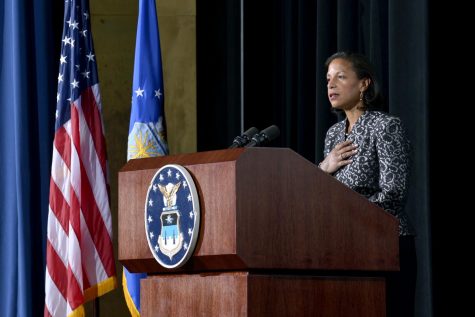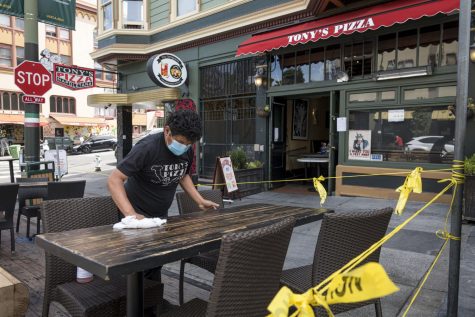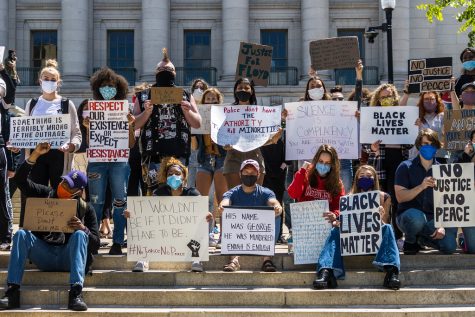Stay-at-Home Orders Lead to Altered Family Dynamics
Stay-at-home orders have contributed to increased rates of domestic and child abuse. (Courtesy of Flickr)
April 15, 2020
The COVID-19 outbreak has forced many Americans to work from home, resulting in more time spent with family members than normal. In addition, with so many schools and universities transitioning to remote learning, nearly all American children are home throughout the week.
The impact of the pandemic on family dynamics is only beginning to be felt, and it will likely have lasting ramifications for many families.
For parents with younger children, they have found themselves taking on the role of a teacher as they assist their children in online classwork. Many college students find themselves unexpectedly home for the longest consecutive period of time since high school.
In terms of relationships, some have predicted a potential rise in divorces after quarantine, citing the recent spike in divorces in China, which has been dealing with the virus longer than the U.S. has. Page Six reported that top matrimonial attorneys are experiencing a 50% increase in inquiries. Additional confusion and stress regarding custody agreements and visitations during quarantine may heighten tensions between divorced couples attempting to co-parent right now.
At the same time, others predict a potential baby boom, with couples growing closer and finding comfort together amid uncertainty and panic. Times of isolation have undoubtedly led many to grow closer to their significant others or reconnect with old partners.
Of course, the reality will be different for every family. Perhaps this could serve as a wake-up call for marriages that were surviving off minimal interaction. This time of isolation allows us to reconnect with ourselves and reevaluate our relationships, for better or worse.
But most frighteningly, experts warn that the social distancing measures may contribute to a rise in child abuse and domestic violence.
Historically, it is common that periods of high stress contribute to elevated rates of child abuse, such as during the 2008 recession. However, the COVID-19 outbreak poses an even more alarming risk to children, as they are unable to escape their homes with usual activities like school.
Additionally, the absence of in-person school settings eliminates the primary source of child-abuse reporting: educators.
Teachers serve as an essential support system for many young children. Even in college, an understanding and empathetic professor can greatly assist and uplift a struggling student. As classes are done virtually for the time being, teachers should try to keep in touch with their students as best they can.
It is imperative that action is taken effectively and quickly in order to mitigate the potentially tragic outcomes of this pandemic on children. There could potentially be an overflow of cases once the process of reopening is truly underway, which some experts worry could lead to children “falling through the cracks” of the system.
Regarding domestic violence, cases have surged amid stay-at-home orders, with experts fearing that these many cases may even be underreported, as victims are less likely to be able to get away from the perpetrators to call for help. I want to echo the calls of United Nations Secretary-General António Guterres to address domestic violence effectively and declare shelters as essential services so that victims have a safe space to go to during this quarantine period.
Though it is always the case, now more than ever it is essential that any suspected cases of abuse are reported immediately.
COVID-19 is going to drastically impact the dynamics of families across the country. Unfortunately, the negative consequences may last long past the end of social distancing measures. Awareness is the best tool in a fight like this. As The New York Times reported, in the frantic push to enact measures to mitigate the spread of the virus, many governments have “failed to prepare for the way the new public health measures would create opportunities for abusers to terrorize their victims.”
As the curve of the outbreak begins to flatten, resources must begin to be allocated to assisting families and individuals in crisis during these challenging times.
With practically everything in our lives altered as a result of this pandemic, now is the time to reevaluate many of the systems that are currently in place. We are seeing, more clearly than ever, the faults in the way the U.S. handles so many vital things, from health care to education to incidents of abuse. If there ever was a time to take risks and find new ways to assist those who need it so desperately, it is now.
Kelly Christ, FCRH ’21, is an English and psychology major from Long Island, N.Y.
Columnist volume 101, Editorial Director and Opinion Editor volume 102










If you want a picture to show with your comment, go get a gravatar.